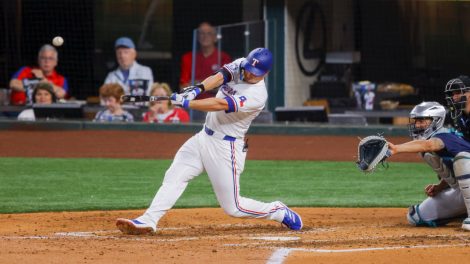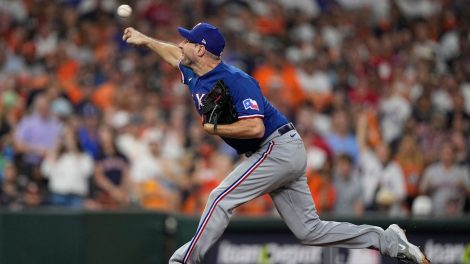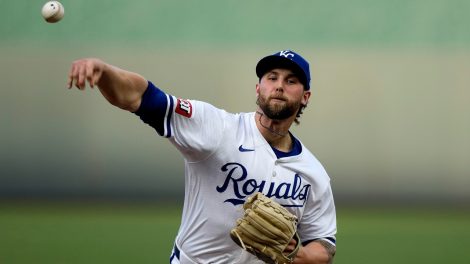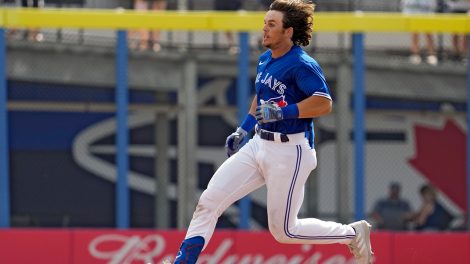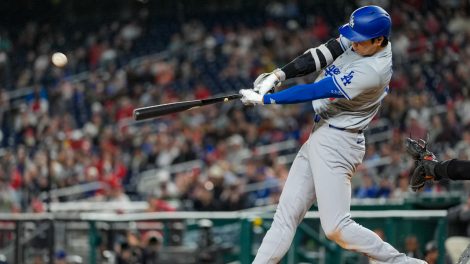TORONTO — Up until the acquisition of Steven Matz from the New York Mets earlier this week, the Toronto Blue Jays had made all their off-season adds via free agency, using their spending power to reel in George Springer, Marcus Semien, Robbie Ray, Kirby Yates and Tyler Chatwood.
Given how their talent base is positioned, taking such an approach right now makes sense. Even though they made the playoffs in the pandemic-shortened season, the Blue Jays remained a work in progress in need of multiple pieces to legitimately contend. And while they pursued Francisco Lindor before Cleveland dealt him to the Mets and discussed Kris Bryant, Kyle Hendricks and surely others with the Chicago Cubs, addressing needs while keeping their prospect capital intact is clearly the preferable route.
At the same time, general manager Ross Atkins acknowledges that “there may be some predispositions, biases” toward keeping prospects because he and president and CEO Mark Shapiro both “grew up in player development and believe in it wholeheartedly.”
“It comes from just believing in player development, believing in players getting better and wanting our players to grow up as Blue Jays and then play for this city and country,” Atkins added. “So we do place an intense value on that. That could be factoring in, but we are certainly open to making trades and at some point we will have to.”
Hours after making those comments, proving his point, Atkins pulled the trigger on the Matz deal, which was a trade very much in line with the club’s recent approach to now-player adds.
Prior to the trade deadline last summer, the Blue Jays added Ray, Taijuan Walker, Jonathan Villar and Ross Stripling for lower-tier prospects well away from the big-leagues. Matz cost them Sean Reid-Foley and Yennsy Diaz, at the moment a pair of depth relief arms who were on the 40-man roster bubble, and Josh Winckowski, another right-hander who they left exposed for the Rule 5 draft.
Each trade carried a relatively low amount of risk, which is sensible when a team is on the rise. There’s reason to believe Matz can be a steady contributor this summer, and we’ll get to that, but even if he doesn’t, in all likelihood they won’t end up regretting the cost.
Such prudence has brought them to this point, but the Blue Jays will soon need to make higher-end adds through the trade market, too. And that’s when things are going to get tricky, because trading from the fringes of the roster and lower tiers of the farm system won’t return the type of top-end starter the team really wants and needs.
To get the next Blake Snell or Mike Clevinger that becomes available, the cost is going to hurt, requiring the likes of Jordan Groshans, Alek Manoah and more.
Making that transition isn’t easy because trading the wrong prospect at any time, but especially now, is fraught with risk. The Blue Jays need only to recall the July 19, 2000 deal that sent Michael Young to the Texas Rangers for Esteban Loaiza for a cautionary tale of how devastating a mistake can be.
While Loaiza delivered 6.3 WAR as calculated by FanGraphs in 75 games over two-and-a-half seasons with the Blue Jays, Young developed into a franchise cornerstone with the Rangers, delivering a career WAR of 25.3. The Blue Jays’ post-season drought doesn’t stretch 21 years if they keep him, I’d argue.
Even if such outcomes are rare, that’s why Atkins and his front-office posse have good reason to be judicious. They’ve spent a long time building a farm system that remains strong even after graduating the bulk of the current core.
With Groshans, Manoah, Austin Martin, Simeon Woods Richardson, Riley Adams and Gabriel Moreno, among others, pushing towards the majors, it’s understandable why a front office so rooted in player development would want to see what they become.
Similarly, those development roots play into an acquisition like that of Matz, who has more ability than his recent performance would indicate. Back in 2016, he was a 2.5-win pitcher, but hasn’t been able to match that over the past four seasons combined, including a dreadful 2020 during which he was a negative WAR performer.
Matz attributed some of his struggles to getting “a little carried away last year with starting to throw a little harder,” after noticing an uptick once play resumed from quarantine. While his sinker’s average velocity nudged up from 93.3 m.p.h. in 2018 and ’19 to 94.5, it stopped sinking, losing nearly three inches of vertical movement, per data on Baseball Savant.

A 9.68 ERA and a grizzly home-run-per-nine rate of 4.11, roughly two-and-a-half times his career average, were the results, leading him to make regaining fastball command an off-season priority.
“I purposely was trying to get a little more carry on my fastball with some of the history of me throwing up in the zone, and stuff like that,” said Matz. “When I focus on commanding the ball, it has kind of the right movement that is just natural for me… Oddly enough, my four-seamer plays like a two-seamer and when I would throw this two-seamer, it would actually carry more like a four-seam. That was just some stuff I was tinkering with.”
Tweaking that repertoire, perhaps increasing the usage of his third-pitch curveball along with his changeup, may be something the Blue Jays raise with him. Matz said he’s had positive reports on pitching coach Pete Walker — a master at building trust and presenting ideas to players as they want them — and bullpen coach Matt Buschmann, and together they’ll work to tap into his game.
“I’m really looking forward to working with those guys,” said Matz, “and getting after it.”
The same goes for the Blue Jays, whose next step may be an asset-reallocation type of trade – moving money to make room for a signing, or trading one contract for another contract. If all goes to plan after that, they’ll then be on the hunt for impact talent at the trade deadline, when the club’s player-development roots will be challenged by win-now realities.
[relatedlinks]


